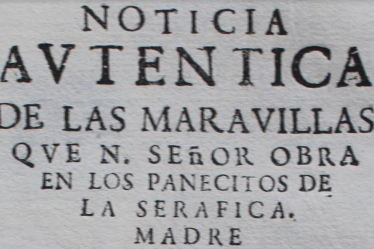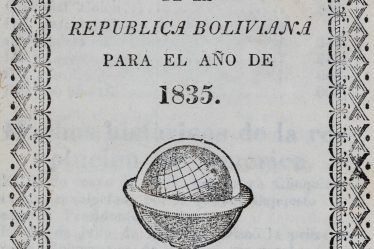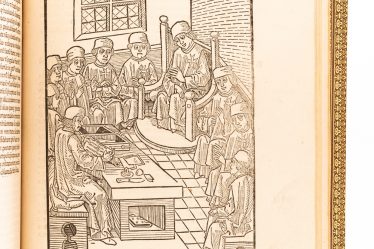The Gloriosa coroa d’ esforcados religiosos da Companhia de Iesu was printed in Libon in 1642 by Antonio Alvarez, written by Bartholomew Guerreiro. It is the first edition, and constitutes an important work about the Jesuit endeavors in Brazil, Japan and the East Indies.
The work is rich in information and contains much detail on the life and apostolic missions of Jesuit missionaries in South East Asia, becoming one of the first and more substantial works on the subject. The section on Japan and South East Asia occupies roughly half of Guerreiro’s work. He opens with a description of Japanese history, geography, and customs and a commentary on the relations between missionaries and Japanese rulers, then moves on to list dozens of Jesuits –many of them native Japanese- who died in Japan from the late 16th century to the 1630s. In the East Indies, he deals with India, Ceylon, and the Moluccas; in all cases, his details are from original sources and some times fresh as had previously not been printed. As a Jesuit, the access to information provided by the missionaries around the globe was made readily available to Guerreiro, who took advantage of his position and compiled his work with much care and focusing on the progress and experiences of the missionaries rather than the apostolic viewpoint, thus, a work of remarkable interest.
Guerreiro’s section on Brazil occupies pp. 300-387, includes a summary of the discovery and settlement of Brazil, the type of resources found there, and the behavior and religious beliefs of the Indians, with a brief mention of cannibalism. He also describes the earliest Jesuit missionaries, giving their names and details of the murder of two of them by the Carijos. But what fascinates Guerreiro is the murder by Huguenot pirates in 1570 and 1571 of some 50 Jesuits en route to Brazil. Most prominent among the Jesuits was Ignacio de Azevedo (pp. 311-322), who had served several years earlier in Brazil and was returning there with 39 other members of the Company. While passing the Canary Islands their ship was captured by Jacques de Sores (the Exterminating Angel), a Huguenot pirate nominally serving under the Queen of Navarre who had become notorious for his sack of Havana in 1555. Guerreiro recounts the merciless deaths Sores inflicted upon every one of the hapless missionaries, for each of whom he compiled a 1 or 2 page biography. Particularly interesting are the comments by Sores, his crewmembers, and the crew and passengers of the Portuguese ship (pp. 373-7), which sound as if they were culled from an eyewitness report. Guerreiro also recounts the capture of a second Portuguese ship by the Huguenot pirates (pp.379-87); this time the pirates killed 12 Jesuits as well as the designated Governor-General of Brazil, D. Luiz de Vasconcellos.
A. F. and Agustin Suarez sign the engraved title and coat of arms respectively.
The book is referenced in: Alden-Landin, 642/65; Borba de Moraes, 380 (“much sought after and is very rare”); Rodrigues, 1169; Backer-Sommervogel III, 1913.



